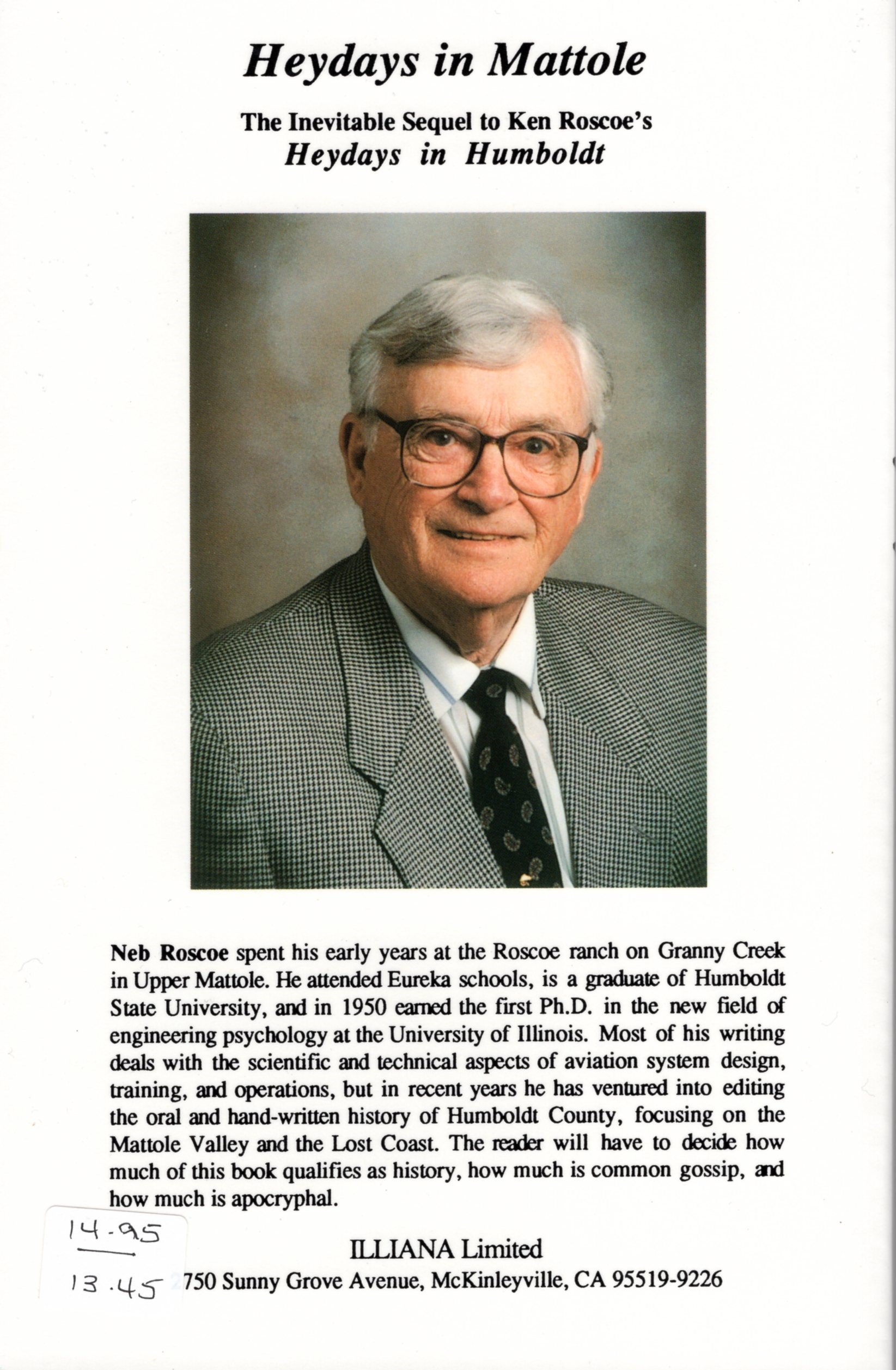Logging Railroads of Humboldt & Mendocino Counties
Logging Railroads of Humboldt & Mendocino Counties
Two of the topics that most interest history buffs about Humboldt County are logging and railroads. Both are admirably combined in a book for sale at the Society's bookstore, in Arcadia Publishing's Images of America series Logging Railroads of Humboldt and Mendocino County by Katy Tahya. Enriched with some 200 historic photographs, this book gives a broader, more comprehensive view of the topic than many do and provides a bibliography of great use to lumber and train enthusiasts.
After an informative introduction, the first chapter focuses on the early days of the local timber industry when new equipment had to be developed to fell and transport our massive redwoods. It tells of days before trains entered the picture and Eureka's first mill was powered by the engine of a grounded steamship, oxen moved most of the lumber while "rails" were peeled poles with wagons shoved or pulled along them.
The second chapter focuses on the developing industry in Humboldt County and the scores of logging rail lines owned by many companies that spread through our forested lands like spiderwebs. Their role was to carry lumber to the mills or to the bay where the wood was shipped out or used in ship building. We are also shown how the logging engines were useful in tasks such as salvaging wrecked ships and building and rebuilding the jetties at the bay's entrance.
Chapter Three tells a similar story in Mendocino County with some noteworthy differences such as greater dependance on rivers for transporting lumber to mills and ports for shipping. And we are shown that with the improvement of roads by the mid twentieth century, trucks took over the transporting of lumber and rail lines went out of business. The big exception was the conversion of one line into the Skunk Train and hauling in tourist money as well.
Then comes the fourth chapter which chronicle the major change that came to the north coast -- the arrival of the Northwestern Pacific Railroad enabling lumber to be transported south by train rather the more hazardous sea route. This period is well chronicled photographically as are efforts to preserve the heritage of logging railroads even after they receeded into history and to being preserved on the Historical Society bookshelves.









